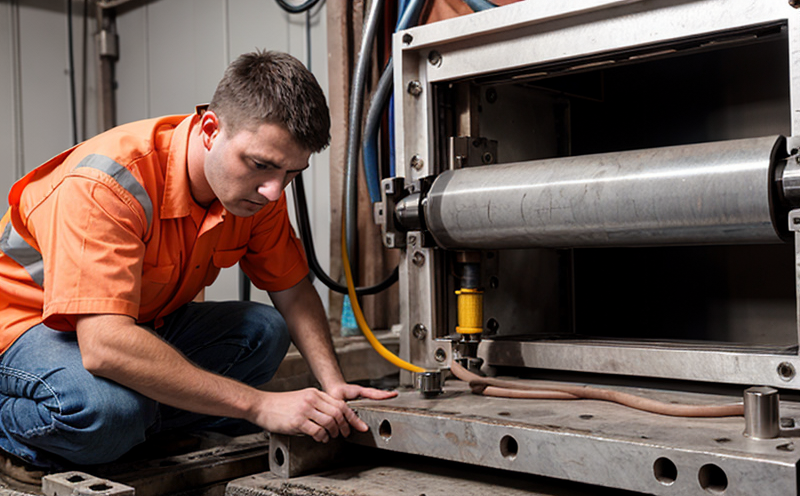IEC 60598 Mechanical Impact and Safety Testing of Luminaires
The International Electrotechnical Commission (IEC) standard IEC 60598 is one of the most widely recognized standards for lighting products. This set of standards covers a range of tests, including those related to mechanical impact and safety testing of luminaires. Compliance with these tests ensures that the luminaire not only performs its intended function but also meets stringent safety requirements.
The mechanical impact test evaluates the luminaire's ability to withstand external forces such as dropping, bumping, or other physical impacts that it may encounter during installation and use. The goal is to ensure that even if a luminaire experiences an accidental impact, it will not fail in a way that could cause harm to people or property.
The safety test component of IEC 60598 focuses on ensuring the electrical integrity and overall stability of the luminaire under various conditions. This includes assessing insulation resistance, protective conductor continuity, and other parameters critical for preventing electric shock and ensuring safe operation.
Compliance with these tests is mandatory in many jurisdictions to ensure that lighting products are safe for use in public spaces, residential areas, and industrial settings. It provides a level of confidence to consumers, installers, and regulatory bodies that the product meets international safety standards.
The testing process involves several steps, including pre-test inspections, specimen preparation, conducting the test according to specified conditions, and subsequent inspection for any signs of damage or failure. The use of specialized equipment ensures accurate results that meet the stringent criteria set forth in IEC 60598.
For R&D engineers, understanding these standards is crucial as it aids in the development of innovative lighting products without compromising safety. For quality managers and compliance officers, ensuring adherence to these standards helps maintain a high-quality product line that meets regulatory requirements. Proper testing can also prevent costly recalls and ensure brand reputation is maintained.
The detailed nature of IEC 60598 requires specialized laboratories equipped with the right tools and expertise. Our laboratory provides comprehensive mechanical impact and safety testing services, ensuring compliance with this standard for luminaires across various sectors.
Why It Matters
Compliance with IEC 60598 is not just a requirement; it's a commitment to safety. In the lighting industry, where products are often installed in public spaces or used by consumers on a daily basis, any failure can have serious consequences. By adhering to this standard, manufacturers and suppliers ensure that their luminaires meet rigorous safety and mechanical integrity criteria.
The standard covers various aspects of luminaire design and construction, including the use of materials, electrical connections, and structural stability. Ensuring these parameters are met helps prevent accidents such as short circuits or physical injuries caused by unstable lighting fixtures.
From a regulatory standpoint, compliance with IEC 60598 can also help companies avoid legal issues related to product safety. In many countries, non-compliance can result in fines, product recalls, and damage to the company's reputation. By ensuring that products meet these standards, manufacturers demonstrate their commitment to safety and quality.
For consumers, this compliance provides peace of mind knowing they are using a product that has been rigorously tested for safety and durability. This is especially important in public spaces where the safety of many people depends on properly functioning luminaires.
Applied Standards
| Standard | Description |
|---|---|
| IEC 60598-1 | This part of the standard provides general requirements for luminaires. It covers design, construction, and performance criteria that ensure the luminaire's safe operation. |
| IEC 60598-2-8 | This section specifies tests related to mechanical impact on luminaires. It outlines the procedures for conducting drop tests, vibration testing, and other forms of mechanical stress. |
| IEC 60598-2-37 | Covers electrical safety aspects such as insulation resistance, protective conductor continuity, and ground fault protection. |
Industry Applications
Luminaires used in public spaces like stadiums, airports, and train stations must comply with IEC 60598 to ensure safety during high-traffic situations.
Industrial lighting fixtures need to withstand harsh environmental conditions and frequent handling. Testing according to this standard ensures they can operate reliably under such circumstances.
Residential luminaires must meet the same stringent standards as commercial ones, ensuring safety in homes where people live.
Safety lighting fixtures used in emergency situations require compliance with IEC 60598 to guarantee they will function correctly when needed most.





